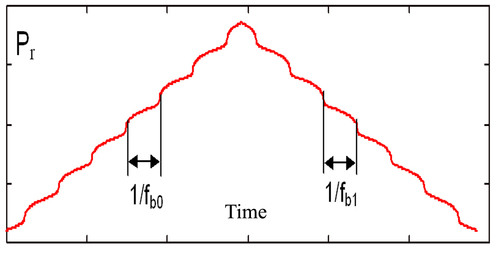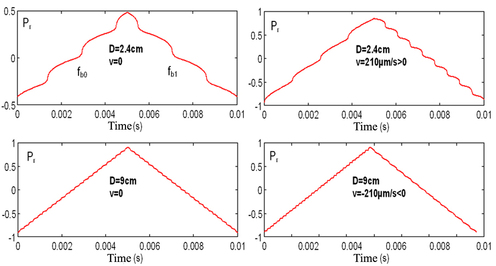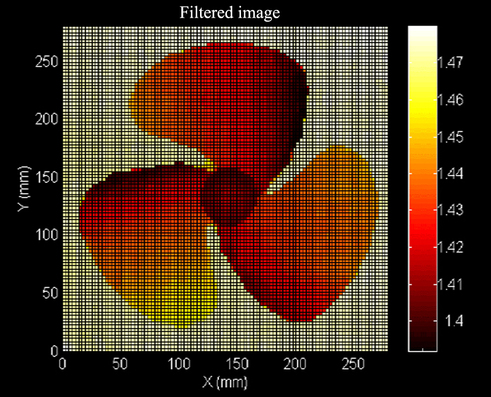
Application of the Distance Measurement
The experimental device adapted to the distance measurement differs from the one for speed of displacement measurement by the modulation of the injection current into a symmetrical triangle. As we studied in the preceding chapter, this modulation will have the effect of also imposing a modulation of the emission frequency without retro-injection into the form of a symmetrical triangle. This modulation will be characterized by the slope :

In these conditions of current supply, the power emitted by the diode with feedback makes a symmetrical triangle shape appear on which a weak disturbance under the form of pseudo-periods applies. The frequency of the appearance of these pseudo-periods will be noted fb0 on the positive slope, and fb1 on the negative slope, as the following figure displays.

Knowing that a pseudo-period is defined by
 and taking into account a weak object speed, we obtain for the positive and negative slope this equation system :
and taking into account a weak object speed, we obtain for the positive and negative slope this equation system :
The evaluation of the object's distance so that its speed can thus be determined from the beat frequency is given by :
The simulation below shows the influence of the distance and the speed on the luminous power signal. The principle parameters of this simulation are
 and a retro-injection coefficient C=0.88. In agreement with the previously established relationships, we notice that the beat frequencies are equal when the speed is worthless. In addition, they are proportional to the object's distance. We notice also that a displacement induces a difference between the frequencies that change signs once the object's direction of movement is inversed.
and a retro-injection coefficient C=0.88. In agreement with the previously established relationships, we notice that the beat frequencies are equal when the speed is worthless. In addition, they are proportional to the object's distance. We notice also that a displacement induces a difference between the frequencies that change signs once the object's direction of movement is inversed.

The image below in distorted colors gives an example of the application of the phenomenon of “self-mixing” in the shape of a helix. The object is placed on a map sitated 148cm from the laser diode. A scanning system with two motorized mirrors allows one to carry out this measurement point by point (100,000 points).
